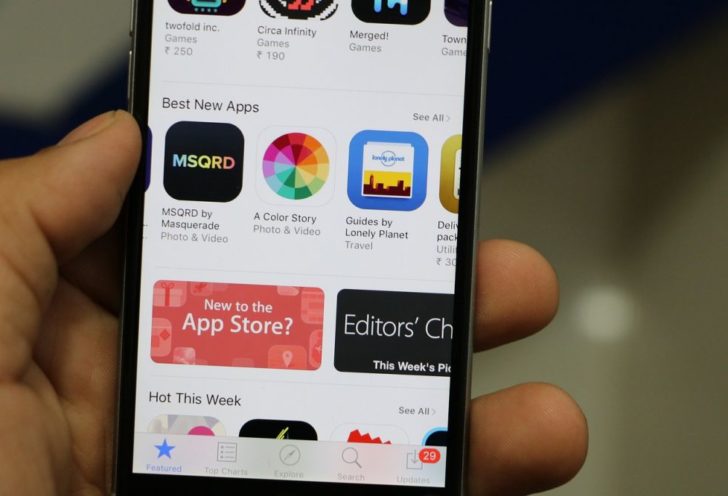Google Lens App: The Ultimate Visual Search Tool

Introduction:
In the fast-paced digital world we live in, staying up-to-date with the latest technological advancements is crucial. One such innovation that has revolutionized our visual search experience is the Google Lens app. This cutting-edge application allows users to understand and interact with the world around them using their smartphone’s camera. Whether you want to identify objects, explore landmarks, translate text, or even shop for products, Google Lens has got you covered. In this article, we will delve deep into the features, historical development, and impact of this incredible app, providing valuable insights for tech enthusiasts and anyone interested in visual search technology.
A Historical Journey of Google Lens App:

Google Lens originated from an experimental venture called Google Goggles, which was released in 2010. Initially, the app focused on image recognition, enabling users to search for information by taking pictures. However, the technology was relatively limited at that time due to hardware constraints and the lack of AI capabilities.
Fast forward to 2017, Google unveiled Google Lens as a standalone app, showcasing significant advancements in the field. Using machine learning, computer vision, and augmented reality, Google Lens became capable of identifying objects, providing real-time information, and even performing actions based on what the camera captures. The app became a part of Google Photos and Google Assistant, making it more accessible to the masses.
Key Features and Benefits of Google Lens App:
1. Visual Searc Google Lens allows users to search the internet by simply pointing their smartphone camera at an object or landmark. It can identify a wide range of items, including plants, animals, products, books, artwork, and more. By leveraging Google’s vast image database, users can instantly access relevant information, reviews, and prices.
2. Text and Language Translation: With Google Lens, text translation becomes effortless. Users can hover their camera over foreign text, and the app will automatically translate it into their preferred language. This feature proves to be invaluable when traveling or studying in a foreign country, eliminating language barriers effectively.
3. Landmark and Location Information: Exploring new places becomes more enriching with Google Lens. Users can point their camera towards a landmark or a prominent building, and the app will provide detailed information about its history, architectural style, and noteworthy facts. It enhances the overall experience of traveling and discovering new destinations.
4. Product Search and Shopping: Google Lens integrates seamlessly with e-commerce platforms, allowing users to search for products they come across in real life. By scanning the item, the app retrieves a wealth of information including prices, reviews, alternative options, and the possibility to make a purchase. This feature revolutionizes the way we shop and empowers consumers with instant knowledge before making a buying decision.
The Evolution of Google Lens:
Since its launch, Google has tirelessly worked on improving the capabilities and enhancing the user experience of the Lens app. Significant updates have been rolled out to refine image recognition, augment accuracy, and introduce new features. Here are some noteworthy milestones in the journey of Google Lens:
1. Expansion across Platforms: Initially launched exclusively on Pixel smartphones, Google Lens gradually expanded its availability to Android and iOS devices. The goal was to ensure maximum accessibility, enabling millions of users to experience the power of visual search.
2. Integration with Google Assistant: Google Lens seamlessly integrated with Google Assistant, enabling users to access its functionalities with voice commands. By simply saying, “Ok Google, open Lens,” users could instantly initiate the app’s visual search capabilities.
3. Smart Text Selection: In 2018, Google introduced the ability to select and interact with text captured by Google Lens. Users could copy and paste text from physical documents, business cards, or even handwritten notes, offering enhanced productivity and eliminating the need for manual transcription.
4. Real-Time Overlay and AR Experiences: Leveraging augmented reality (AR), Google Lens began introducing real-time overlays and interactive experiences. For instance, users could virtually try on clothes before purchasing, see how furniture would look in their homes, or even experience 3D representations of artwork and sculptures.
5. Continuous AI Improvements: Google’s commitment to advancing AI capabilities has been evident in the continuous improvements seen in Google Lens. The app’s ability to recognize a vast array of objects, including intricate or specific items, has drastically improved over time, ensuring remarkable accuracy and usefulness.
Conclusion:
Google Lens app has undoubtedly transformed the way we explore and interact with our surroundings. By harnessing the power of machine learning, image recognition, and AI, this visual search tool empowers users with instant access to information, translations, shopping options, and much more. The historical journey of Google Lens showcases the relentless dedication of Google to push the boundaries of technology and deliver an unparalleled visual search experience. As technology enthusiasts, let us embrace this innovative app and embrace the endless possibilities it offers.





















